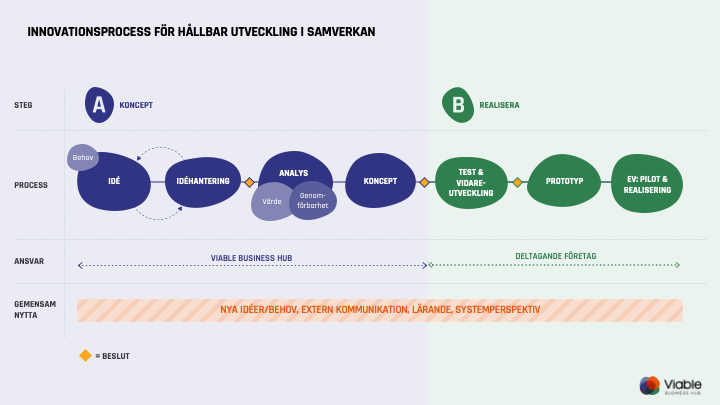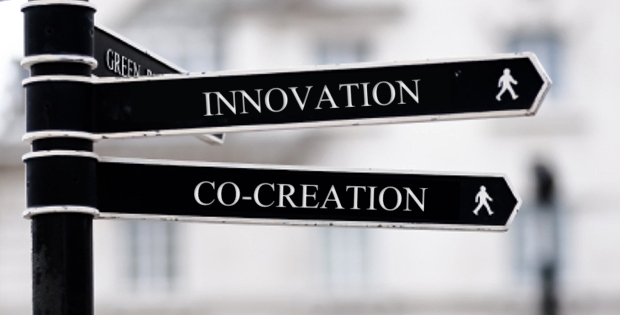How can industrial companies of all sizes work together for increased sustainability and find concrete and innovative solutions in a smooth and effective way? This is one of the main issues for which the project Future Sustainable Industrial Environments and the viable business hub initiative have now developed a process.
All companies, organizations and public actors involved in this collaborative initiative believe in developing common solutions for the sustainability challenges that characterize the industry today – regardless of which industry you operate in. But it might be easier said than done.
"Collaboration for joint development does not happen on its own in practice – a common method or model is needed that contributes to the impact and concrete results. Otherwise, it is easy to get stuck in the phase where you hold cooperation talks and dialogue about different possible solutions, without getting enough progress – or without really knowing if these are the right questions that you ask yourself, says Jenny Eklund, process manager and coordinator of viable business hub 2020-2021, who has led the work on developing working models and working methods for the initiative.
Will boost the flow of concepts for sustainable solutions
The innovation process that is now being introduced is based on many years of experience about what is needed to get concrete results from collaboration, and what pitfalls it is easy to fall into. This model will now be tested in sharp position in the current cases and subprojects produced by the venture, and then further refined during the project.
"Structure and framework in the form of an innovation process are needed to move from idea to result. It is also particularly valuable in this type of collaboration initiative, where it is often a challenge to get results and flow. We want to be able to create value through a number of important sustainability cases and become a bit of a "concept factory", thus contributing to increased sustainability in the region," says Lars Mikaelsson, Innovation Manager at Umeå Energi, who has participated in the process team.

Propulsion, responsibility and roles
The model addresses different aspects of collaboration and innovation. The basis is the innovation process itself, which describes how an idea or an identified need should be handled, analyzed, tested, further developed and finally implemented. Along the way, there are a number of decision-making opportunities at different levels that will determine whether the innovation or the conditions for realising it are sufficiently promising, or whether work on the issue should be discontinued.
The working model also solves other important issues that are important to be clear about when many parties are involved; as the roles involved in the joint development work, which participating parties (companies or organisations) are responsible for the progress of the process and/or financing in each event and which deliveries are expected. The process images include an accompanying "manual" that describes in more detail the events step by step.
"The goal is to create a smooth and efficient workflow that aims to find concrete, value-creating and innovative solutions to crucial sustainability challenges – which can be beneficial for the entire region. Increased sustainability should go hand in hand with increased business benefits, which will benefit both industrial companies, society and residents," says Jenny Eklund.
More voices about the model
"When it comes to innovation, you need a process that allows both iterative and joint exploration of a problem, while providing both control towards results and with clear delivery interfaces. It has been a leader in developing the model," says Johan Granström, business developer ABB.
"We face major challenges in achieving the global sustainability goals and a crucial success factor is that we manage to work together to find new technical solutions and business models. The innovation model that we have now co-created gives us the conditions to succeed in this," adds Magnus Stenvall, project owner for the initiative.
"We need to get even more focus on concrete results in collaborative projects, and we hope that this way of working will lead to just that," says Niklas Åström, CEO of Ålö in Umeå.

